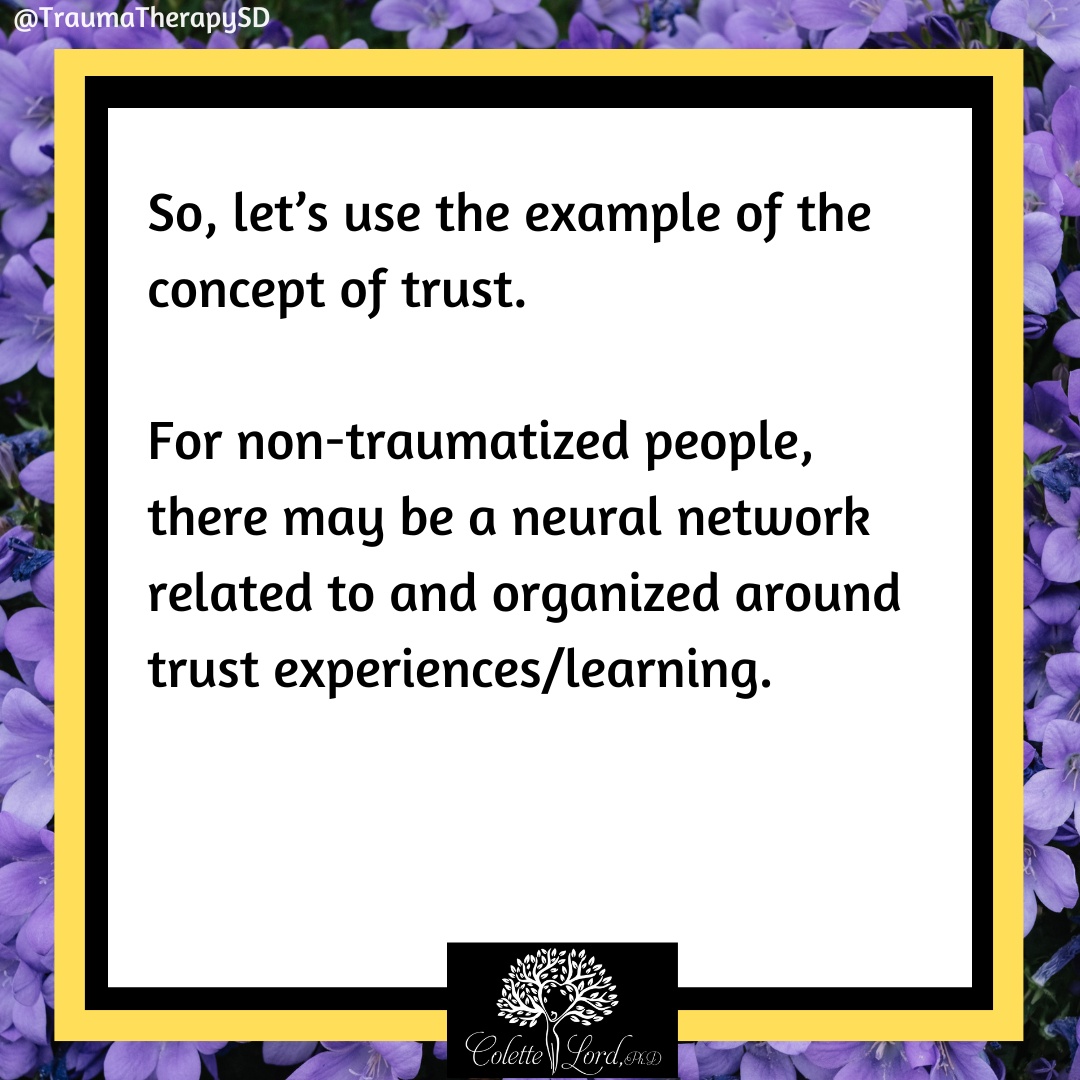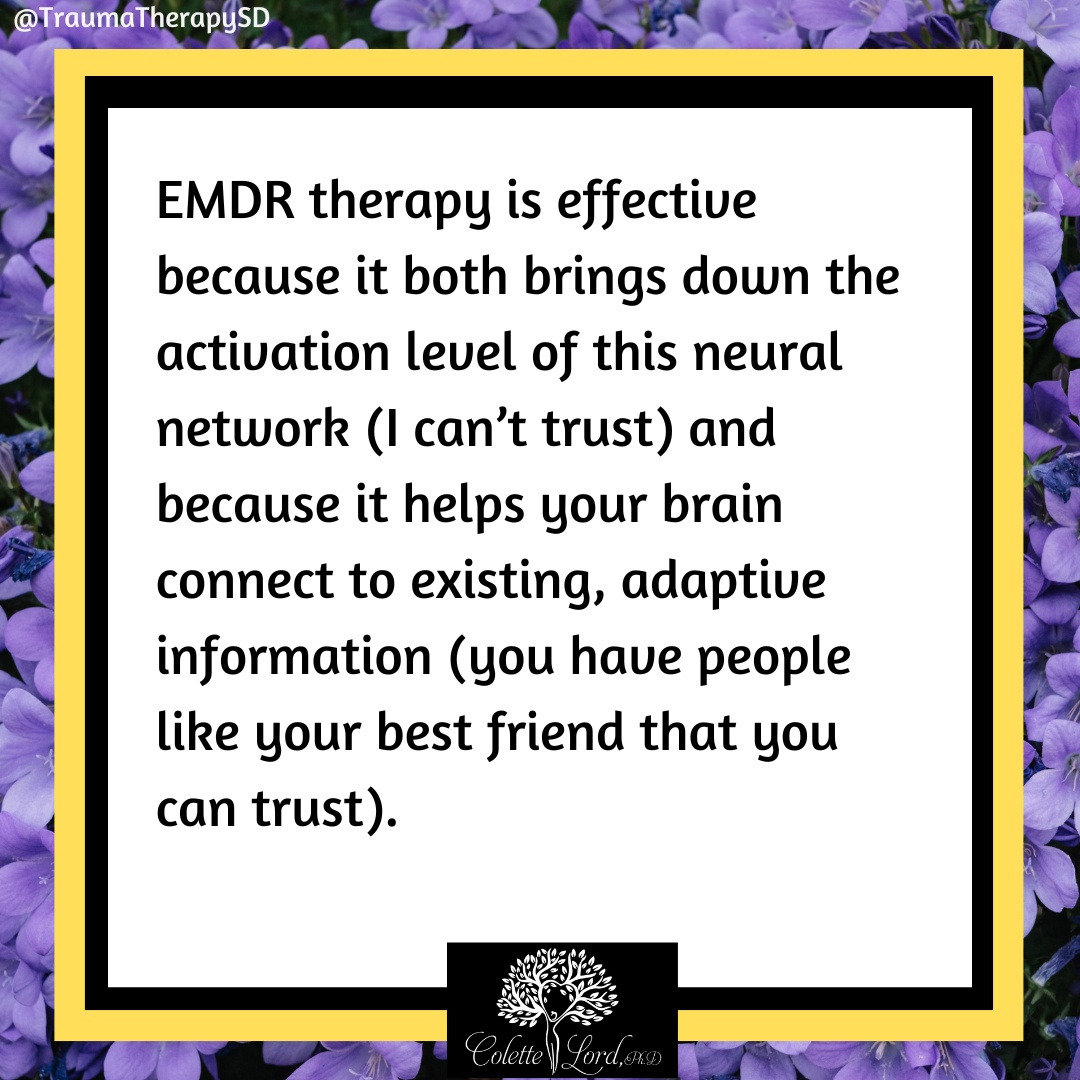Adaptive Information Processing (AIP) model
The Adaptive Information Processing (AIP) model is the theory behind EMDR therapy and how the brain processes traumatic information.
According to the AIP model, our brain links similar traumatic experiences together, based on what we learned from those experiences.
So, let’s use the example of the concept of trust. For non-traumatized people, there may be a neural network related to and organized around trust experiences/learning.
In contrast, a traumatized person will have a neural network organized around the belief, I can’t trust others, which links all the experiences that have added to or confirmed this belief.
Those beliefs learned through trauma are assigned more importance by our brains, meaning this neural network is sensitized and more likely to link up with and get activated by anything related to trust, no matter how tangentially.
At the same time, because this network is so activated, and our brains tend to look for confirmatory evidence of what we already believe, it will also tend to ignore other information as irrelevant.
So, in this example, you may have evidence that your best friend is trustworthy and keeps demonstrating this to you, this adaptive information is ignored and not connected to the rest of your trust related experiences.
EMDR therapy is effective because it both brings down the activation level of this neural network (I can’t trust), and because it helps your brain connect to existing, adaptive information (you have people like your best friend that you can trust).

















